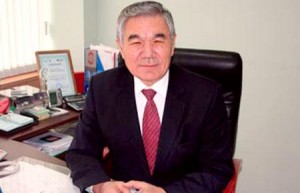 In his state-of-the-nation address “Kazakhstan’s Path to 2050: Common Goals, Common Interests, Common Future,” President Nursultan Nazarbayev set specific tasks, among them is increasing the efficiency of the mining sector in order to give it a competitive advantage and developing rare earth metals because of their importance to science-intensive industries.
In his state-of-the-nation address “Kazakhstan’s Path to 2050: Common Goals, Common Interests, Common Future,” President Nursultan Nazarbayev set specific tasks, among them is increasing the efficiency of the mining sector in order to give it a competitive advantage and developing rare earth metals because of their importance to science-intensive industries.
The President also set the task of making Kazakhstan a world leader in geological exploration. It is difficult to overstate the importance of geological exploration because the future of our country depends on it.
It is necessary to use all available scientific and industrial resources and modern technologies in the development of existing fields and in the exploration of new resources, especially since the volume of proven mineral resources has dramatically decreased over the past decade.
Surface deposits are almost exhausted and exploration of the earth’s depths is a very complicated and expensive thing. Therefore, market conditions dictate the need for the most cost-effective technologies in finding new deposits.
In the twenty-first century, the role of an “all-seeing eye” can and must be taken by space technology in mineral exploration. These technologies most effectively ensure compliance with environmental safety both during the production and transportation of raw materials.
Our questions are not just about oil and gas fields and hydrocarbon transportation, but also about the safety of open mining operations, such as monitoring the stability of pit walls.
The National Sultangazin Centre for Space Research and Technologies has accumulated solid experience in the use of space-ground monitoring technology and remote subsurface sensing. The cost of these methods is several times less than traditional methods, which is especially important taking into account the vast size of our country. Using space monitoring, we can determine the contours of the field, its depth and potential in only a short time. A variety of terrestrial technologies, such as seismic, geochemical sensing, magnetic and gravimetric methodologies can give more accurate supporting data.
All of the above is also reflected in other sections of the President’s address. There are plans to grow economic sectors such as mobile, multimedia, space and nanotechnologies over the next five years.
The use of space technology in various sectors of the economy will improve economic efficiency and simultaneously further Kazakhstan’s scientific progress. Supporting the research and innovations of which the President speaks, including those in space, will create a synergetic effect. This approach will also facilitate the commercialisation of research.
We must not forget that applied science, with its commercial component, is always based on a powerful backdrop of fundamental science. Only the high “density” of fundamental research generates different kinds of discoveries and innovations that can be converted into commercial developments. Leading industrial countries of the Americas and Europe have always understood this very well. For example, Japan and China, which previously only copied foreign developments, now largely dictate global scientific and technological standards that are based on their own scientific foundations. That is why the head of state spoke primarily on the development of advanced education, science, new knowledge and new technologies.
The author is a Doctor of Physical and Mathematical Sciences, Academician of KazNAU and Member of the National Academy of Sciences of the Republic of Kazakhstan.


